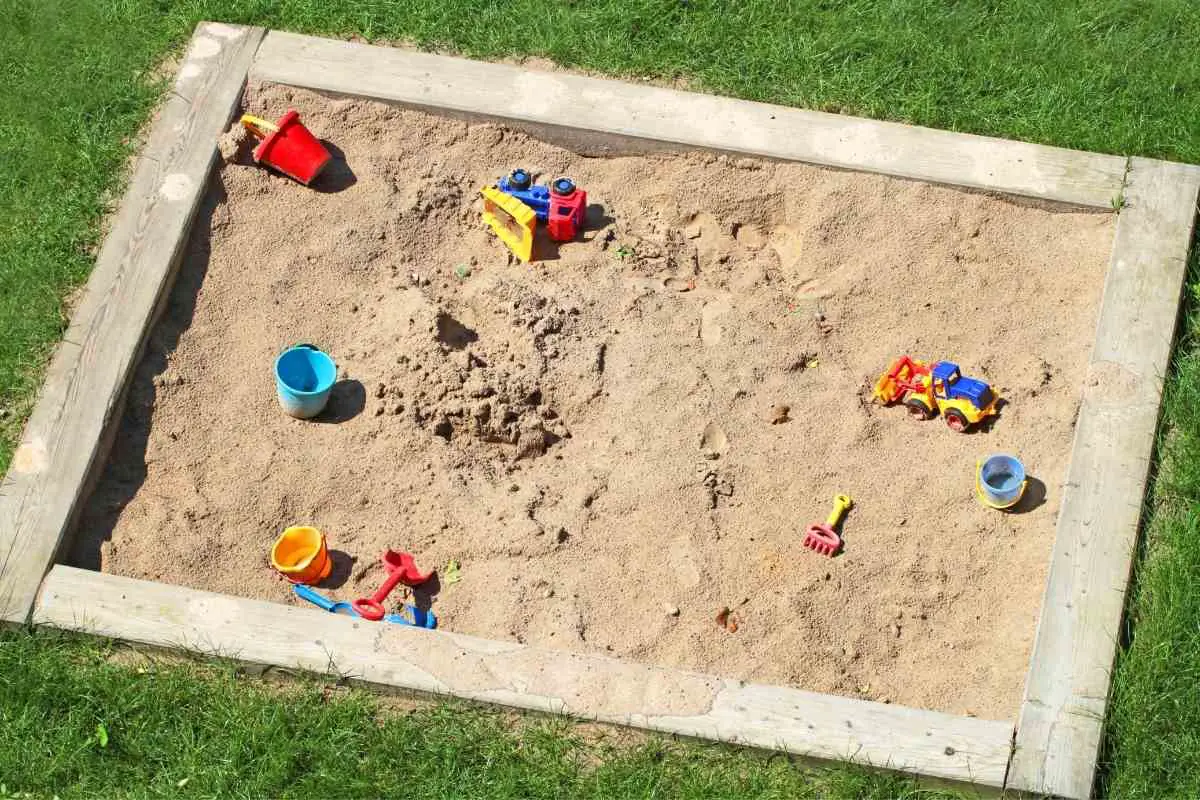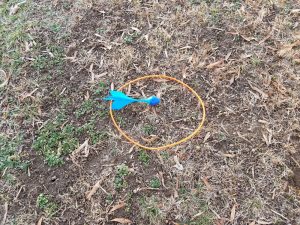A sandbox is a fantastic source of entertainment for children young and old and is one of the best ways of providing unstructured play outdoors.
There are endless opportunities for learning and fun and it’s also great for developing motor skills and problem-solving skills.
If you’ve ever owned a sandbox, though, you’ll have come to realize that over time, they lose their cleanliness.
Sometimes, you might even find them populated with insects or parasites, or find you’ve been left an unpleasant gift from an animal visitor.
When your sandbox is in dire straits you might feel like ditching the sand and starting again.
Of course, this is definitely an option, but did you know you can actually clean and sanitize sandbox sand?
In This Article – We’ll go through the steps on cleaning and sanitizing your sand and provide some tips on how to keep it fresh.
Sandbox Cleaning Step 1: Remove Objects
The first part of the cleaning process involves removing objects out of the sandbox.
This means removing all toys, natural debris like stones or sticks, and – hopefully not – animal feces.
As you might expect, animal droppings are rife with harmful bacteria and parasites.
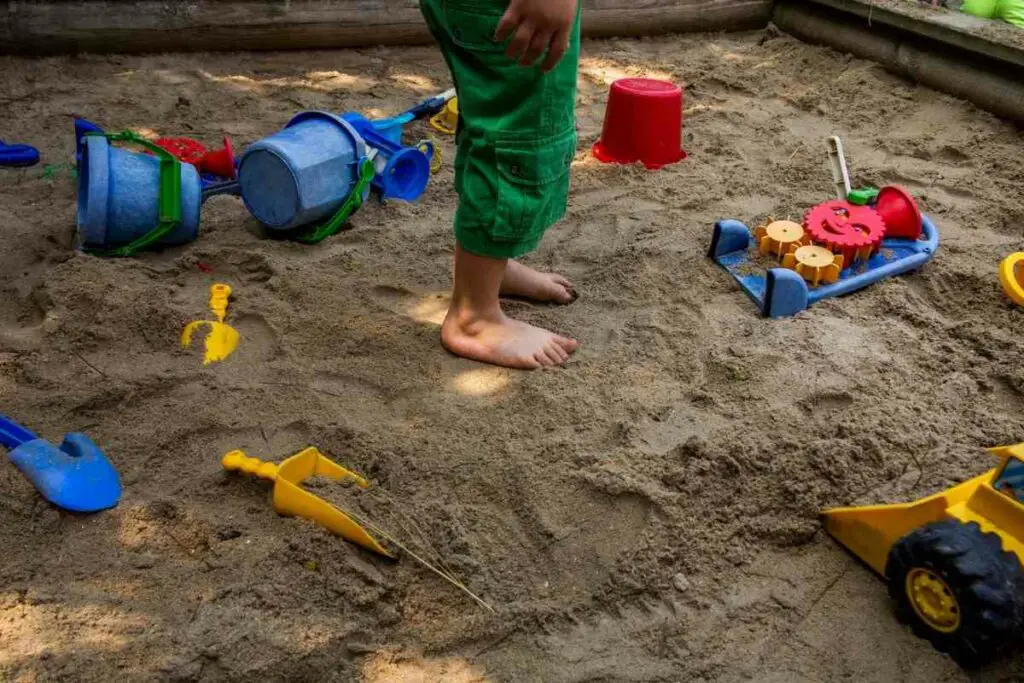
Some excrement, particularly from birds, can cause a mold named Rhizopus stolonifer to grow.
This mold also goes by the name black bread mold. It is a fungus that can cause a dangerous and fatal disease called zygomycosis in humans.
If you want to sanitize your sand, therefore, you need to get rid of all possible contamination sources.
If you have a large sandbox, use a garden rake to fish out the larger objects, making sure you dig right down to the bottom of the box.
While this won’t catch leaves or animal feces, it will mean you’ve got the bigger items out.
What to Expect? To remove smaller items like yard debris, you’ll need something like a little box scoop or a sand sifter. If your sandbox is large, prepare for this to take a while! A good technique is to work your way across the sandbox, sifting as you go.
Don’t forget that any buckets, spades, or other sand toys you remove will need cleaning before you put them back into the sanitized sand.
Sandbox Cleaning Step 2: Sand Sanitizing
When you’ve removed all debris and are just left with the sand, you can begin the disinfecting and sanitizing process.
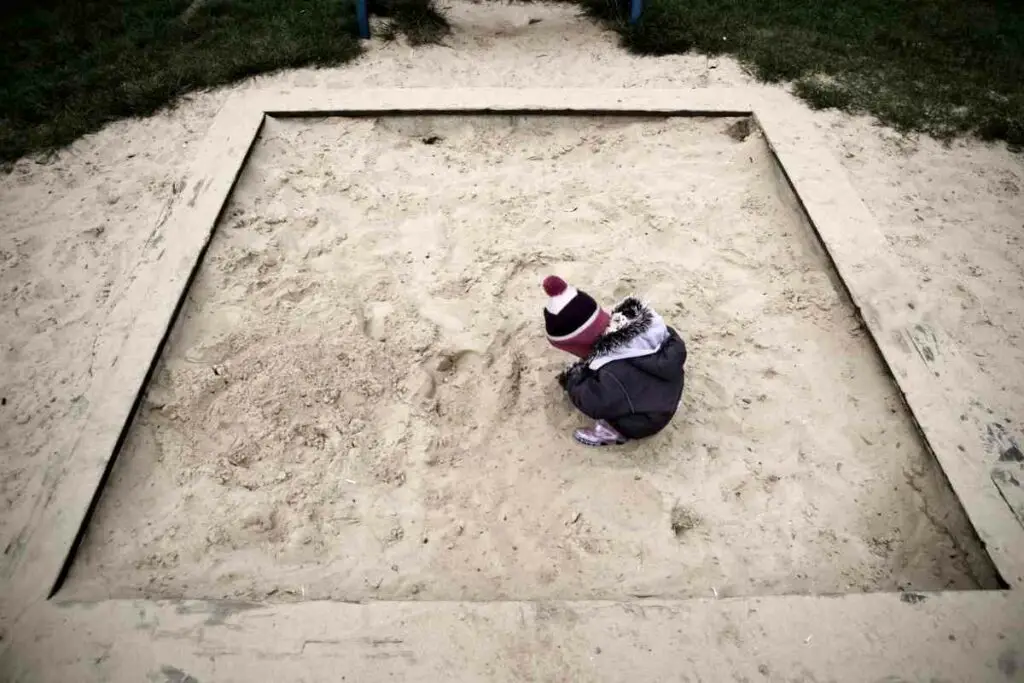
This will remove fungus, bacteria, or other contaminants.
You can sanitize sandbox sand in two ways:
- with bleach
- or with vinegar
1. Sanitizing with Bleach
Bleach is the best when it comes to its effectiveness at sanitizing.
It is a very powerful disinfectant that will kill 99% of viruses, bacteria, and other pathogens. Bleach is, therefore, the most powerful when it comes to having a germ-free sandbox.
To sanitize the sand, you’ll need around one gallon of household bleach and a 2–3-gallon spray bottle (a garden sprayer pump bottle is ideal).
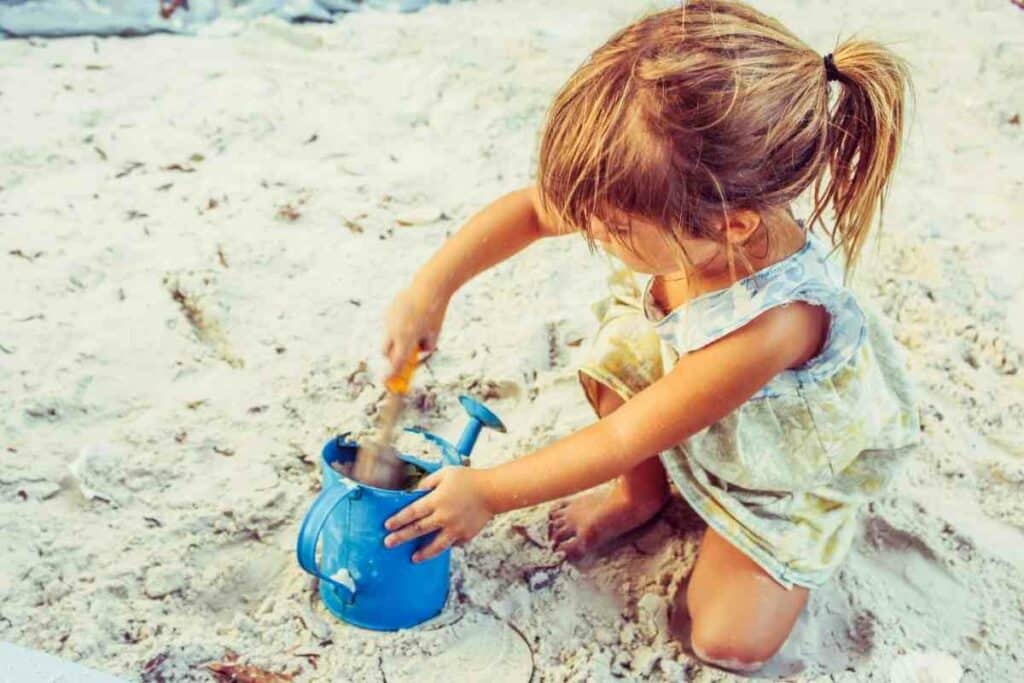
Make sure you wear clothes that you don’t mind being stained just in case.
The method:
- Combine the bleach 50/50 with tap water in the bottle.
- Cover the top layer of sand with the spray until it is damp.
- When the top layer is all covered, use a shovel or rake to mix and turn the sand to expose dry layers.
- Repeat steps 2 and 3 up to five times. After the final spray, leave the top layer without mixing or turning the sand.
- After one hour or so, the top sand layer will be dry, turn it again.
- Allow the sand to dry completely over two or more days – you should turn it periodically.
- It’s ready for the children to play again!
As far as possible, try to let the sand dry without debris or animals getting into it.
This can be achieved with a breathable cover that lets the sand dry while keeping bugs out.
It’s a good idea to look at the weather forecast and plan this when it’s not going to rain!
2. Sanitizing with Vinegar
If you’re reluctant to use a powerful substance like bleach for sanitizing your sandbox, an effective and safer alternative is to use white vinegar.
White vinegar is really useful as a cleaning product and disinfectant.
You might also see it referred to as acetic acid.
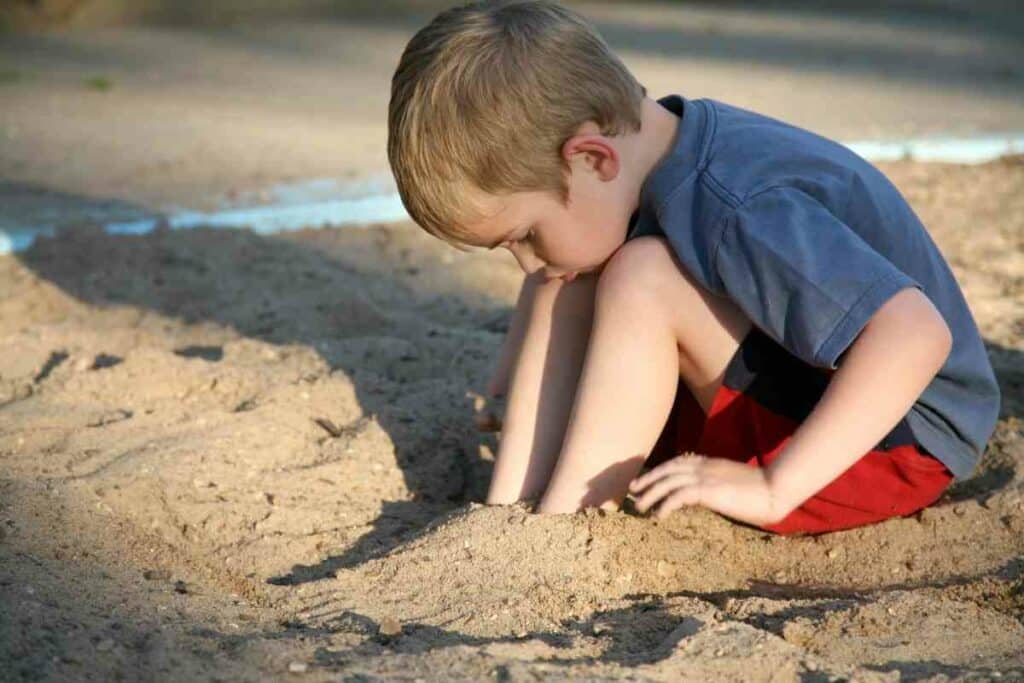
It won’t be as effective or powerful as bleach, but it will kill lots of bacteria and other pathogens.
For this method, you’ll need about one gallon of distilled and pure white vinegar.
The method is pretty much the same as the method with bleach – but you won’t have to worry about staining clothes or being as careful with the solution.
The method:
- Sift and clean the sand as described above
- Combine the vinegar 50/50 with tap water in the bottle
- Cover the top layer of sand with the spray until it is damp.
- When the top layer is all covered, use a shovel or rake to mix and turn the sand to expose dry layers.
- Repeat steps 3 and 4 up to five times. After the final spray, leave the top layer without mixing or turning the sand.
- After one hour or so, the top sand layer will be dry, turn it again.
- Allow the sand to dry completely over two or more days – you should turn it periodically.
- It’s ready for the children to play again!
When you use the method with vinegar, you still need the sand dry before you allow the children to play.
However, it is completely safe to play in before it dries. It will smell though, which the kids might not like!
After it has dried completely, the smell will disappear.
However, the odor does linger for animals with sensitive noses, which might help deter neighborhood cats from using it as a litter box!
If the smell bothers you, you could always add an essential oil like lavender oil to the solution or mix some cinnamon (a large amount) into the sand.
Both of these also repel insects naturally too!
Sandbox Cleaning Step 3: Keeping It Clean
When you’ve sanitized and cleaned your sandbox, you’ll need to try and keep it like this as long as you can.
Here are some ideas on keeping your sandbox clean:
- Cover it – having a cover on the sandbox when you’re not using it is the best way to keep it clean. A durable, snug waterproof cover is best as it will keep animals (and their ‘gifts’), debris, rain, and insects out.
- Don’t allow drinks or food in the sandbox – spilling drinks or crumbs in the sandbox will attract ants or other insects in there. It’s also a sure-fire way to increase the likelihood of mold and bacteria.
- Don’t let pets in – even though it might be cute and fun to see your dog or another pet playing in the sand, it’s not a good idea for hygiene reasons. Even if they don’t use it as a toilet, they still bring bacteria in.
- Keep insects at bay – as well as covering your sandbox when not in use and using essential oils or cinnamon, if you plant some natural insect repellants like mint, citronella, and rosemary around your sandbox, it will discourage them. You could also spray the sandbox perimeter frequently with a plant-based, non-toxic bug repellant.
- Don’t let the sand get wet – when sand is wet it becomes a breeding ground. Pests like mosquitoes as well as mold, mildew, and bacteria thrive in damp conditions. Keeping a cover on will prevent rainwater from getting in. You should also turn over the sand regularly (every 1 – 2 weeks) so that the sand at the bottom gets a chance to dry out.
- Watch out for runny noses and leaky diapers – children can also be a source of contamination, unfortunately! As long as you’re on hand with tissues and can see no one’s got a full (or no) diaper, you’ll be fine.
Sandbox Cleaning Frequency
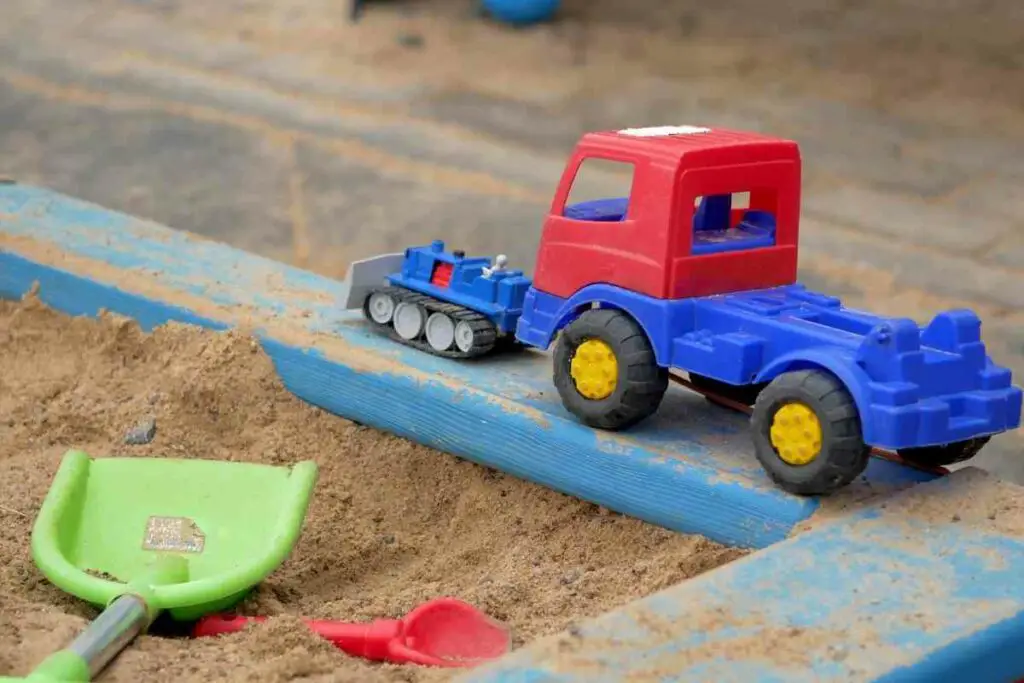
How often you clean your sandbox depends on its use:
- If you use it often, you’ll need to sanitize it a few times each year.
- If you only use it occasionally, twice, or even once a year should suffice.
However, if there is an obvious source of contamination (like animal feces), you should sanitize the sandbox.
Also, if you notice any mold, mildew, or an unpleasant or strange smell, you should clean and sanitize the sand as this is a sign of bacterial growth.
People living in humid areas might have to sanitize their sandbox more often.
Final Thoughts
You can never eliminate germs 100% but sanitizing your sandbox is good practice.
Whichever method you choose, the process will take a few hours.
However, it’s certainly worth it for peace of mind when you let your children play.
Using a bleach solution is more effective than using vinegar but you do run the risk of getting it on your clothes. It’s also toxic to the environment.
White vinegar is much more environmentally friendly and is not dangerous for children or animals. However, it doesn’t kill as many bacteria.
As with a lot of things prevention is better than the cure – in other words, work hard to maintain your sandbox all year long by keeping it covered, etc. and you’ll need to clean it less often.
